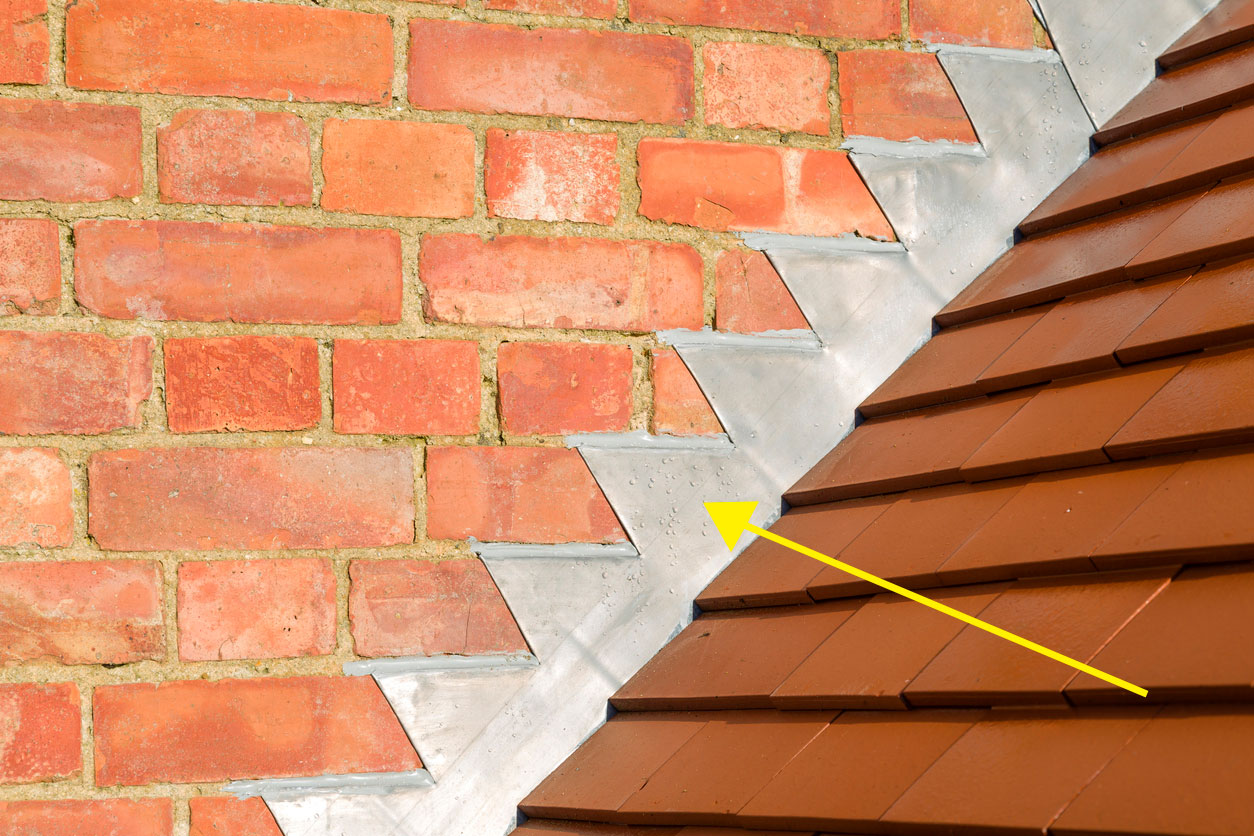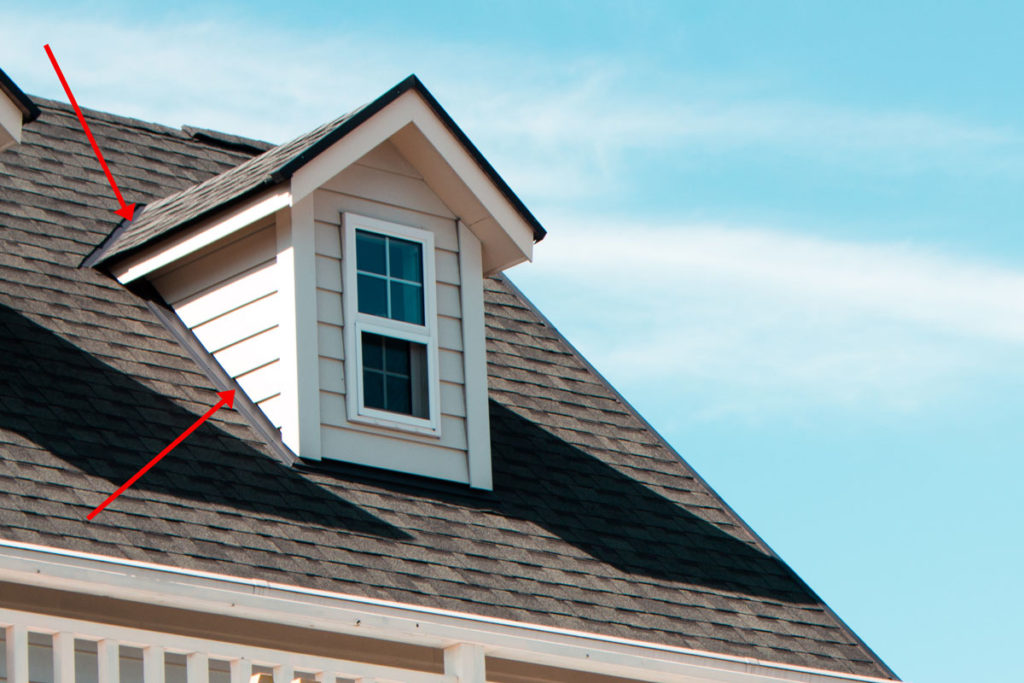
Protecting your roof against water damage requires the installation of flashing material from the get-go. Roof flashing works together with the shingles to keep water from damaging the integrity of your home’s roofing structure. However, its effectiveness depends on the kind of materials used (which is mostly metal) and the quality employed in installing it. In this article, we discuss everything you need to know about roof flashing. Read on for more information.
What Is Roof Flashing?
Roof flashing is a thin covering installed next to skylights, chimneys, and roof intersections. It directs water away from sensitive areas of the roof, helping prevent water damage. Common types of roof flashing materials include copper, galvanized steel, and aluminum. Out of all the metal flashing available on the market, steel is the most preferred. It can take the form of continuous flashing, counter flashing, base flashing, step flashing, cap flashing, and chimney flashing. You can install flashing continuously in areas like the roofing, walls, skylight, chimneys, and related areas.
Areas of the Roof that Need Flashing
Several areas require the compulsory installation of flashing by a professional contractor. Regardless of the target area, the materials used should be durable enough to withstand the daily ravages of harsh weather conditions such as rain and snow. The following are the common types of roof flashing:
1. Skylights
A roof with a skylight might be lacking continuity in the shingles hence requiring the installation of flashing. That’s why the skylight is usually made from plastic material, which is very different from walls and singles. It is usual for a skylight to protrude out from the roof, necessitating an additional cover in the form of flashing. That’s why it is crucial to have a professional contractor install step flashing on your skylights.
2. Vents
Roof vents come in two main types, including pipes and hoods. Vent flashing is necessary for flashing continuous tubes and hoods. Since shingles expand and contract, a properly installed flashing slides under the shingles before sealing. Once that’s done, a professional contractor places the vent cap on the vent.
3. Pipes
This particular type of continuous flashing fits tightly over the round pipes passing through your roof. Thus, it has a cylindrical shape with a bottom flange lying flat on the roof. Pipe flashings help prevent leaks from spreading water throughout your roofing structure. Properly installed pipe flashing directs water away onto the shingles and protects your roof and the rest of its structure. When every pipe on your roof has the right protection, it will withstand every kind of harsh weather.
4. Chimneys
Chimneys are some of the roof features that require metal flashing. Here, you can install flashings to protect your shingles from water damage. Chimney flashing in this area goes under the shingles above the chimney and over-the-shingles on the lower side of the chimney. If handled wrongly, chimneys might leak water through the roofing into the rest of your home.
5. Dormer
The dormer is a part of the roof projecting from one of the sloping sides. They provide extra headroom inside the building and let in additional light. It also provides additional ventilation for the attic and other upper areas of your home. You can add flashings in every shingle row or place them as a strip around the projection.

Common Types of Roof Flashing
Having considered the different areas that require roof flashing, it’s now time to think about the types of flashing. Installing each of these in different ways prevents water leaks from damaging your roof. Here are the types of roof flashing you should install on your roof.
1. Drip Edge Flashing
Drip edge flashing goes along the eaves or edges of your roof to stop an overflowing gutter from pushing water underneath the shingle rows on the upper part. Here, a contractor may install L-bend continuous flashing to eliminate excess water from rising during sideways rain. This is one of the most important types of flashing wood fascia board rotting. Additionally, the piece of copper that goes on the roof deck prevents fascia deterioration due to the effects of overflowing water. That’s because it directs water into the gutter, driving it away from your roof surface.
2. Vent Pipe Flashing
Do you have round pipes or vents passing through your roofing structure? If so, you need to install flanged cylindrical flashings on the roof. It reinforces the area around the vents to prevent leaks in the entire roofing structure.
3. Valley Flashing
Roofing valleys may result in unnecessary leaks if not appropriately reinforced. It is here that two roofs meet, forming a V-shape. The valleys require continuous flashing throughout shingles to direct water away to the gutter on the edge of the roofing structure. If not handled properly, valley flashing can result in shingle erosion and roof leaks. It is continuous flashing that runs down from the top of the roof to the drip edge, allowing water to flow inside the valleys. Thus, it takes the form of an aluminum valley stretched from the top of the roof downwards into the gutter. With that, you will prevent your valleys from being the source of water leaks. Ask a professional contractor to install flashing sealing all seams using roof cement and placing nails on the valley flashing edges.
4. Step Flashing
Most homes have a chimney of some sort. Since it is one of the most vulnerable parts of the roof, it requires step flashing to drive water away. Besides, base flashing is installed right onto the vertical wall and over the shingles. This type of flashing is also great when installed on the skylights, especially if they are close to the attic wall. When installing step flashing, every course of shingles should overlap others as you move down the roof. The roof flashing and roofing material are held together with cement and galvanized steel rails to prevent leaks completely.
What Materials Are Used for Roof Flashing?
Different materials make roof flashing. Most commonly, you will find roof flashing made from aluminum, copper, lead, and stainless steel. However, some flashings might feature materials like plastic and other composite materials. Incidentally, metal flashing is the most durable and, by extension, the most expensive. Most homeowners seem to like the type of roof flashing made from copper, a stable and adaptable material. If you opt for plastic roof flashing, you should be ready to replace it after damage by direct sunlight.
Conclusion
The purpose of roof flashing is to prevent water from damaging your roofing structure. It can be in the form of step flashing or continuous flashing, depending on the area of the roof you are installing. Others might want to base flashing, pipe flashing, counter flashing, chimney flashing, or valley flashing. Some of the roof features that require flashing include the vent, chimney, skylight, walls, roof deck, and other related areas. The most preferred materials include metal like galvanized steel, aluminum, and copper.
